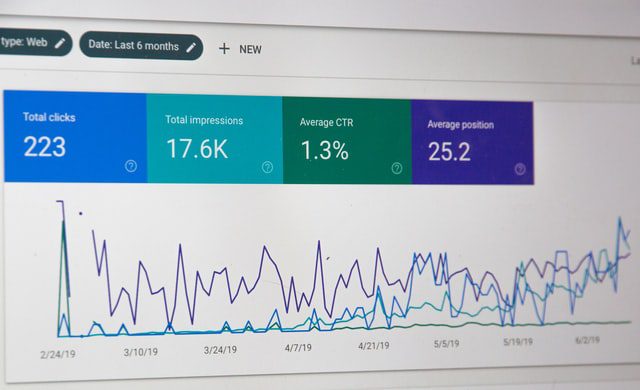Creating an engaging website for your business is no longer a luxury but a necessity. Because of the COVID-19 pandemic, online shopping in the first six months of 2020 increased 30.1% compared to the same period in 2019. Customers are searching for product information online now more than ever before. Businesses that can provide this information on their website have a high chance of turning these site visitors into first-time customers and eventual brand loyalists.
Your business website is your online spokesperson. It tells customers about what they can expect from your business, how to use your products, and how to contact you. A great website acts as a bridge between you and your next sale. With a great website, you can expect high:
- Click-through rates
- Revenue per order
- Conversion rates
- Average order quantities
- Pageviews
Creating a website for your business isn’t rocket science — you just have to use the right strategy. The overall goal is to offer site visitors a seamless experience and meet the requirements to rank higher on search engines. Use the following tips to create a business website that sells:
Create Quality Content
Websites with quality content are traffic magnets – people gravitate towards content that solves their problems. As long as you can provide this, you can expect people to spend time browsing your website. The first step for creating a website for your business with quality content is to design attractive landing pages. Rather than talking about your products’ features, tell people how the products can help them.
Next, create blog posts that add as much value as possible to your target audience. At the very least, ensure that every part of any blog post offers enough insights to the customers. Something as simple as adding images, statistics, and infographics could go a long way towards improving your content. Each blog post should feel like it comes from an authoritative resource.
When creating a website for your business, your aim should be to turn it into a go-to resource for your target audience. Posting content consistently can help you achieve this. Remember, the more you expose your brand to your target audience, the higher the chances that they will consider you during their next purchase.
Ensure Your Website’s Interface Is Interesting, Engaging, and Memorable
Your website’s interface should create a positive impression that drives results. It’s crucial to welcome your target audience to keep scrolling rather than frustrate them. An estimated 94% of first impressions are based on your site’s web design. Here are a few insights on how you can create a business website with a great user interface:
- Incorporate the standard business pages (about us, home, sitemap, contact us, privacy policy, blog, and management team pages)
- Use provoking call-to-action buttons
- Embrace consistent branding throughout your site. This includes using the same brand colors and tones throughout the website
- Use attractive graphics and easy-to-read fonts within the site
- Optimize your site for people with assistive devices
- Take time researching what your target audience wants from your site, and make it easy for them to meet those needs
- Research the competition to understand what makes their website’s interface seamless. You can apply similar principles within your website
Make Navigating Your Website a Breeze
When creating a website for your business, your priority should be optimizing your site’s navigation. Visitors need to find what they are looking for with ease. In the same way that signage helps customers find the product they want in a supermarket, smart web development will help your site’s visitors access the different parts of your site.
Start by categorizing your site’s content the right way. You can then implement tags throughout your site to make accessing these categories easy. Ensure your main navigation menu is easy to reach and has enough content to guide customers. Your site’s design should also be responsive enough to match the diverse screen dimensions of your visitors’ devices.
However, you need to steer clear of cluttering your navigation menu when creating a website for your business. The more minimalistic the site, the easier it will be for customers to find their way around. You can always use drop-down menus to reduce clutter, especially if your site has multiple pages.
Optimize Your Website for Search Engines (SEO)
SEO is extremely important to the performance of your site. It ensures that your site’s content can be indexed by search engines and will appear on search engine result pages (SERPs). Once your website’s pages have been indexed, you will be competing with other similar pages to appear at the top of SERPs. When creating a website for your business, do remember that the higher your site ranks on SERPs, the more traffic it can attract, which means higher conversion rates. Research shows that 91.5% of the average traffic share is generated by sites listed on the first page of Google SERPs. Here are some of the main factors you should focus on to improve your site’s SEO:
- Embrace keyword research and optimization
- Improve your site’s page load speeds
- Make your site mobile friendly
- Optimize your site’s code
- Use high-quality internal, inbound, and external links to improve your site’ domain authority
- Gather positive reviews on top review sites like Yelp and Google My Business.
Small tweaks to your SEO approach could mean the difference between appearing on the first search result page and page 300 — a page where customers might never find you. SEO can, however, be challenging for people looking to create a business website for the first time. While you can always walk the DIY path, looking for reputable SEO companies to walk you through it all is wise.
Install Useful Webmaster Tools

Make data your friend when creating a website for your business. Webmaster tools help collect data on your site’s performance, which you can use to track progress. For instance, with the help of this information, you can easily identify whether your site’s traffic is dropping. The data will also easily reveal the reason behind such a drop and how to resolve the issue.
While there are multiple webmaster tools to use, you can start by relying on Google Search Console and Google Analytics for insights. Be on the lookout for data on:
- Your daily, weekly, and monthly site traffic
- The typical number of page views for your site
- The average time visitors spend on the site
- Crawl errors that could be making your site rank low
- Your site’s bounce rate (number of people who live your site having barely interacted with its content)
- Backlinks and broken links to your site
- Web page load time
- Keyword optimization data
From the moment you start creating a website for your business, the data will guide you into making the right decisions. Remember, it might take some time before you start seeing changes in how your website ranks. As long as you are consistent in embracing the right SEO strategies, ranking high and improving sales through your website will be a walk in the park.
A Great Business Website Will Never Disappoint
It is one thing to have a business website and another to have a site that generates a lot of leads. The latter requires dedication and an understanding of what will work for your audience and search engines. Sure, creating a website for your business is hard work, but with the right level of support from a reputable web design company, navigating the different requirements will become easier. Follow our blog for more information on how to create a business website that sells.

